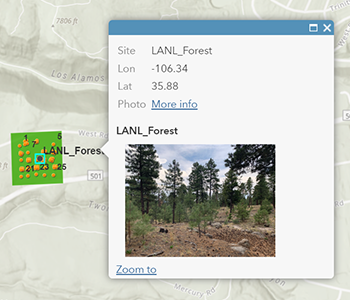Overview

3D fuel characterization for evaluating physics-based fire behavior, fire effects, and smoke models on US Department of Defense military lands.
3D fuel characterization for evaluating physics-based fire behavior, fire effects, and smoke models on US Department of Defense military lands (SERDP Project RC19-C1-1064)
Rapid advances in remote sensing technology and wildland fire modeling are promoting innovations in fuels mapping and operational CFD models of wildland fire behavior and smoke. In the near future, fire and smoke modeling will provide near real-time prediction of fire behavior and smoke based on 3D fuel characterization. Before these models can be widely used, more work is needed on fuel characterization and mapping methods to support model inputs. The 3D fuels project uses an innovative, hierarchical sampling framework to create building blocks and methods for next-generation fire and smoke modeling.
The 3D fuels project was funded by the US Department of Defense Strategic and Environmental Research and Development Program to develop 3D fuels inputs for next-generation fire and smoke modeling. Our research team collaborated with multiple organizations, including the US Department of Defense, Florida State Forest Service, University of Montana, The Center for Lands Management, and Washington State Department of Fish and Wildlife, to establish demonstration sites and collect integrated datasets of 3D fuels clip plots, terrestrial laser scanning (TLS), and airborne laser scanning (ALS).
Through this initiative, a library of tools and datasets were developed to leverage multi-scaled estimates of 3D fuels tied with intrinsic fuel properties that can be used directly with FastFuels and used within the QUIC-Fire modeling system.


















